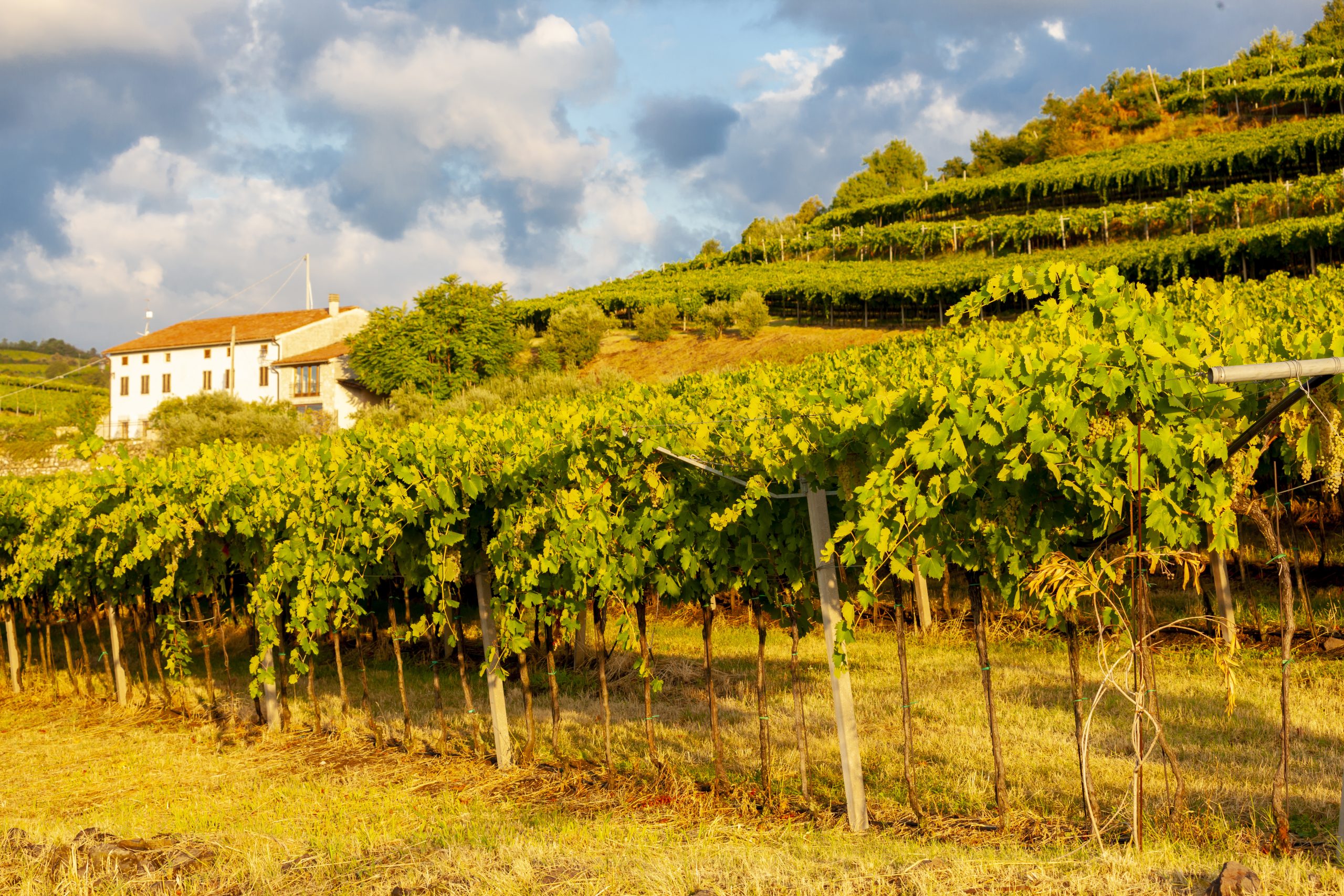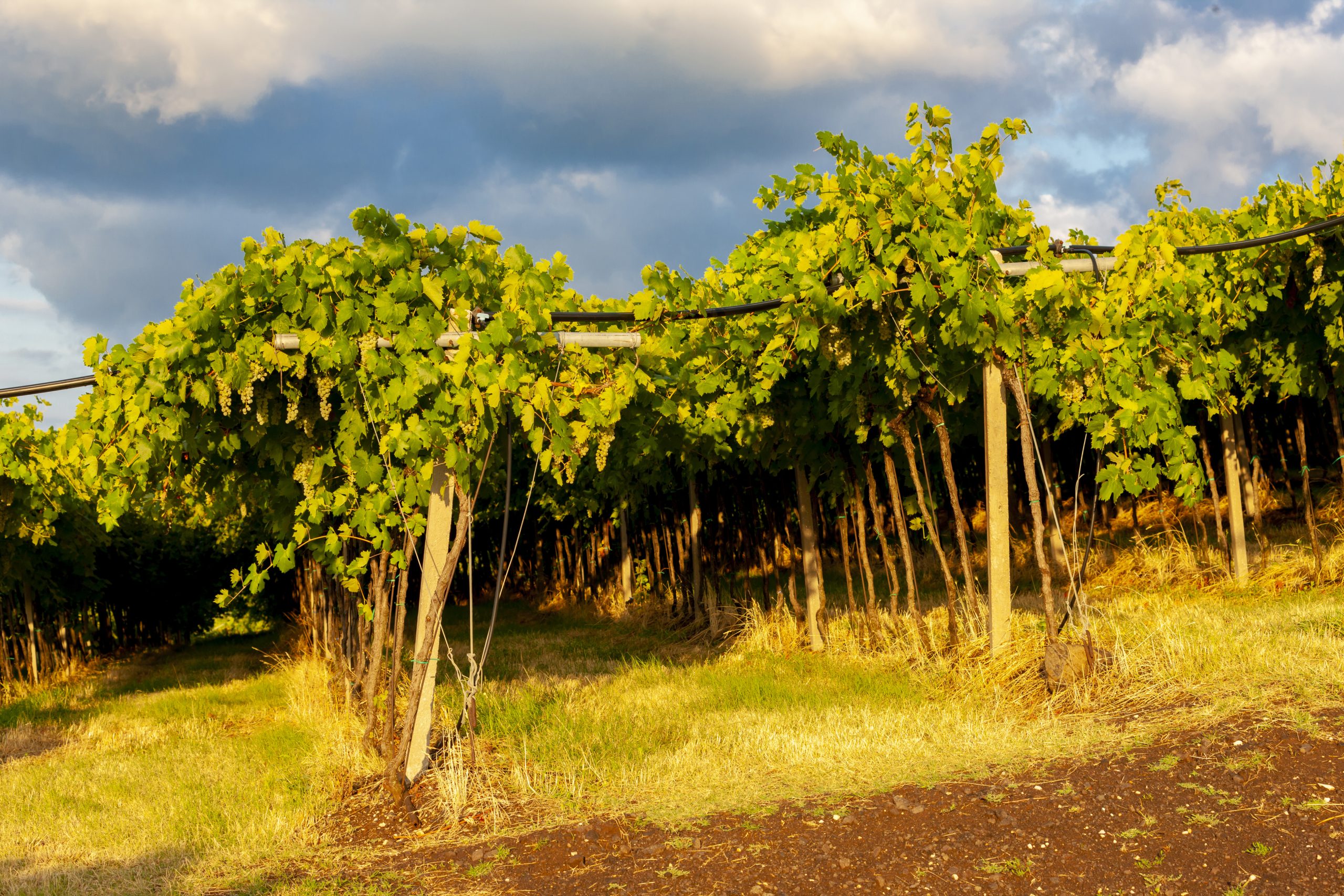This website uses cookies so that we can provide you with the best user experience possible. Cookie information is stored in your browser and performs functions such as recognising you when you return to our website and helping our team to understand which sections of the website you find most interesting and useful.
Exploring the relationship between geology and style in Soave
Multiple terroirs create immense diversity in the wines of Soave DOC, the result of a dramatic geological history.

Soave can occupy many positions. It is well known on restaurant wine lists, often providing an inexpensive option by the glass, yet it is also hailed as a great wine in establishments around the world. It is one of Italy’s more recognisable wine regions, but its signature grape is barely planted further afield. Even within its legal structure, it has the separate denominations of Soave DOC, Soave Superiore DOCG and the sweet Recioto di Soave DOCG.
Demystifying those many positions was one of the core purposes of a recent London masterclass on the region. With Italian wine expert Filippo Bartolotta guiding the attendees through, the diversity of Soave emerged as its key strength. Indeed, adapting to Soave’s complex terroir has been an immense challenge, but has positioned the region to make unique and respected wines.
An ancient history
Stand on the crenellations of Soave’s Medieval castle, and you will notice a diverse landscape. The small town, sitting at the southern extreme of Soave DOC, is placed almost perfectly at the junction between north Italy’s two dominant geographical features. To the north, the first foothills of the Alps ascend, with some reaching 600 metres within just a 15 minute drive of the town. To the south lies the Po Valley, a vast, flat fertile plain that is home to a third of Italy’s agricultural production.

Visually, therefore, the land of Soave DOC is varied, even to the layman. Yet this divide in topography is not the only geographical force at play. Just to the north, running on an almost north-south axis sits the Castalvero fault. This geological dividing line splits the landscape impressively precisely between east and west. To the east, ancient volcanic activity has left steep hills of basaltic influence. To the west, an ancient seafloor has transformed over the ages into limestone deposits.
Those two dividing lines are evidence of the region’s ancient past when 65 million years ago, the land that eventually became Soave DOC was underwater. Volcanic eruptions beneath the sea created large areas of igneous rock, while calcareous deposits on the ancient seabed accumulated to form limestone. Shifts in tectonics and sea levels have since driven these geological formations above water. Their dramatic origins are now reflected in appreciable differences in terroir.
Four Soave zones
Like any region, every vineyard tells a unique story. Even a slight difference in aspect, elevation or soil can substantially alter the resulting style of wine. However, the geography is sufficiently clear-cut that Soave DOC can be divided into four approximate geographical zones.
The volcanic hills sitting mostly to the northeast of the region are the most eyecatching of Soave. In this zone of direct volcanic deposits, often containing a large amount of basalt, there are distinctive soils, ranging in colour from grey to yellow to reddish brown. These stand out on dramatic slopes, which range from 50 to 550 metres in altitude and from slopes of 10° to a vertigo-inducing 80°.
Wines made from these vineyards are renowned as some of the most structured, intense and complex in Soave, a suitable reward for often difficult conditions. They are known for their higher acidity and fragrant, fresh profile. One peculiarity of the soils is their high levels of benzenoid compounds, which lend the wines characteristic notes of cinnamon.

Further to the west, the hills are dominated by limestone. Though still hilly, the landscape is gentler with white rocky outcrops. The soils are shallow – often less than 50 centimetres deep – and have low water retaining potential. The profile is heterogeneous, highly variable from vineyard to vineyard, but this offers producers opportunities to craft individual wines. If they have any overarching qualities, the wines of the limestone hills show aromatic complexity and accents of exotic fruits on the palate.
Taking the southern area of the appellation, a series of flatter plains stretch towards the Po Valley. Towards the west, particularly in the Monteforte Valley, the soils are volcanic in origin, spread over lower altitudes and much gentler slopes. The area is known for wines with notable acidity thanks to the deeper soils, as well as a spicy profile with touches of the same cinnamon found in the hills.
This sub-region has a very important role, however, as a place to make popular, affordable examples of the style. The soils are fertile and, thanks to the gentle inclines, easy to farm. The clay base (on top of which sits the volcanic material) retains water well, meaning that the soils are drought resistant and consistent year on year. When making high quality wines for a mass market, that can be a crucial commercial benefit.
The final geological sub-sector is to the east, where the plains are rich in limestone. The calcareous deposits result from millennia of streams flooding and leaving alluvial limestone from the foothills and mountains of the Alps. Mostly fine, though with occasional rockier soils, the limestone helps bring aromatic finesse and complexity to the area’s wines. Like the regions to the west, it is less hilly and therefore easy to work. This in turn makes the limestone plains a dependable source of good value wine.
Together, the four predominant geological profiles make Soave a region with immense potential. The soils lend themselves to a variety of aromatic profiles, ranging from bright, zesty wines to rich, textural and ripe examples. Although the threads of orchard fruits, refreshing acidity and aromatic complexity are consistent, the range is notable for a smaller region.
However, revealing these traits is a challenge. Soave’s winemaking historyalmost two millennia of ithas been defined by adapting to the difficult landscape and discovering the best ways to express its grapes.
Taming the Soave hills
Since Roman times, the region of Soave has been used for grape growing and winemaking. With such a lineage, the locals have adapted to the conditions of their locality. This process has not always been simple, however. Thanks to both the inherently challenging landscape and the demands of the market, several local traditions have emerged to facilitate the longstanding industry.
The most literal example of taming the hills, visible even to passing tourists, is the system of terraces on its slopes. Responding to the difficult terrain, which discounts many common pieces of vineyard machinery, producers have for generations made flat terraces in Soave’s hills. These are separated and supported by dry stone walls. The ancient system renders Soave’s rich and complex landscape more accessible to the local farmers. Both as a means to select more varied sites and as a method of keeping production costs manageable, it has helped position Soave as a fine wine at a reasonable price.
Growers have also adapted to the landscape in their unique methods of training vines. The pergola Veronese, like the system of terraces, demonstrates winemaking in response to the landscape. It involves high-trained, horizontal vine training systems, in essence creating a roof of vegetation under which the grapes can hang. It is particularly associated with northwest Italy, one of the few winegrowing regions where traditional training holds strong in the face of globally dominant systems of vertical shoot positioning.
Much like the terraces, a system of pergolas allows growers to work more difficult plots. With less need for canopy management, fewer hours are needed in the vineyard. It also helps avoid unsustainable peaks in demand for pickers; the system promotes slower ripening, lessening the chance of a rush to harvest across several sites. Moreover, the traditional system addresses a very contemporary issue. Shaded by a canopy, they are protected from extreme heat events, seen increasingly in a warming climate. The canopy also protects grapes from sunburn; indeed, its shading property is also a relief for vineyard workers on hot working days in summer and autumn.

Soave’s heritage also comes through in the region’s wineries, which maintain the unique character of Soave. A strong cooperative system persists in Soave, with growers pooling harvests and resources to make wines. This system is increasingly recognised for the production of high quality, good value wines across Europe. Soave also presents a unique heritage with its sweet wines, labelled Recioto di Soave. The amber-coloured dessert wine is rich in history. Its traditional production method involved drying out the white grapes on straw mats, usually in the attic where the building would be hottest. Though many producers have updated facilities and materials, the spirit of the original style lives on as testament to Soave’s winemaking history.
Such is the significance of the region that it has been recognised by the UN as a Globally Important Agricultural Heritage System (GIAHS). As only one of two areas recognised in Italy, and the only one producing wine, it stands out among the country’s many wine producing regions. The accreditation acknowledges its agricultural history, born of its varied landscape. Moreover, it provides a framework for preserving that history. The GIAHS has, for instance, disseminated expert guidance on protecting terraces from erosion and equipment to promote use of the pergola training system.
World-renowned wines
It is thanks to the dramatic landscape and centuries spent learning to adapt to it that Soave holds such a strong position on the international stage. Indeed, the final section of the masterclass was dedicated to tasting through a comprehensive range of Soave wines, from dry to sweet, everyday to premium and freshly bottled to carefully aged.

Unifying the selection, however, was the grape variety, Garganega. This grape, native to the region, must account for at least 70% of the blend. The remainder is most commonly Trebbiano di Soave (also known as Verdicchio) although a little Chardonnay may also feature.
When grown in Soave, Garganega adds fine acidity to a wine, but also a soft texture. Its characteristic aromas are lemon, almond and pear, perhaps lending the wine its approachable quality. However, as mentioned above, the various soils and geological formations of Soave can lend a variety of different aromas. The grape does, in fact, feel particularly connected to its landscape: despite Soave’s global reach, the grape is very seldom found outside Italy, where Soave is the most planted region.
Winemaking of course can also influence the style of Soave. A young vintage, especially from limestone soils, can be an ideal aperitivo, with its delicate fruity and floral flavours. With many bottles retailing under £15, such wines are also ideal on the list of a bar or pub. More textural, food-friendly wines, on the other hand, can be achieved through lees ageing.
Of course, there are also more niche styles which can fit other moments. Many premium Soaves, for instance, can age for a decade or more, achieving notes reminiscent of Chablis or aged Riesling as they mature. Meanwhile Recioto di Soave can offer intense aromas of dried and tropical fruits balanced against fine acidity. Quite different from the famed botrytis-influenced wines of Sauternes or Tokaj, the small-scale Recioto di Soave DOCG is beginning to win over more and more admirers.
Impressively, examples of all these styles were on display at the masterclass. Though Soave has a strong international reputation, the event demonstrated that there is much more to discover from the region. Soave may not be the simplest place to make wine, but it can make a case as one of the finest.


Related news

